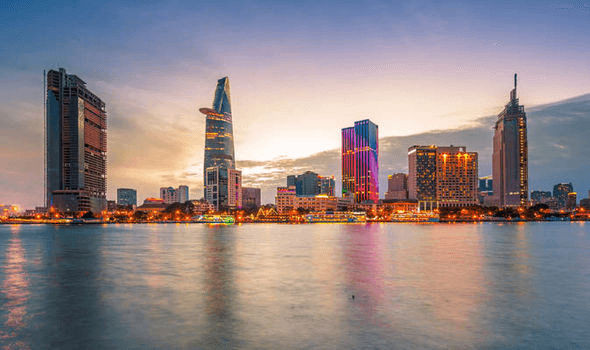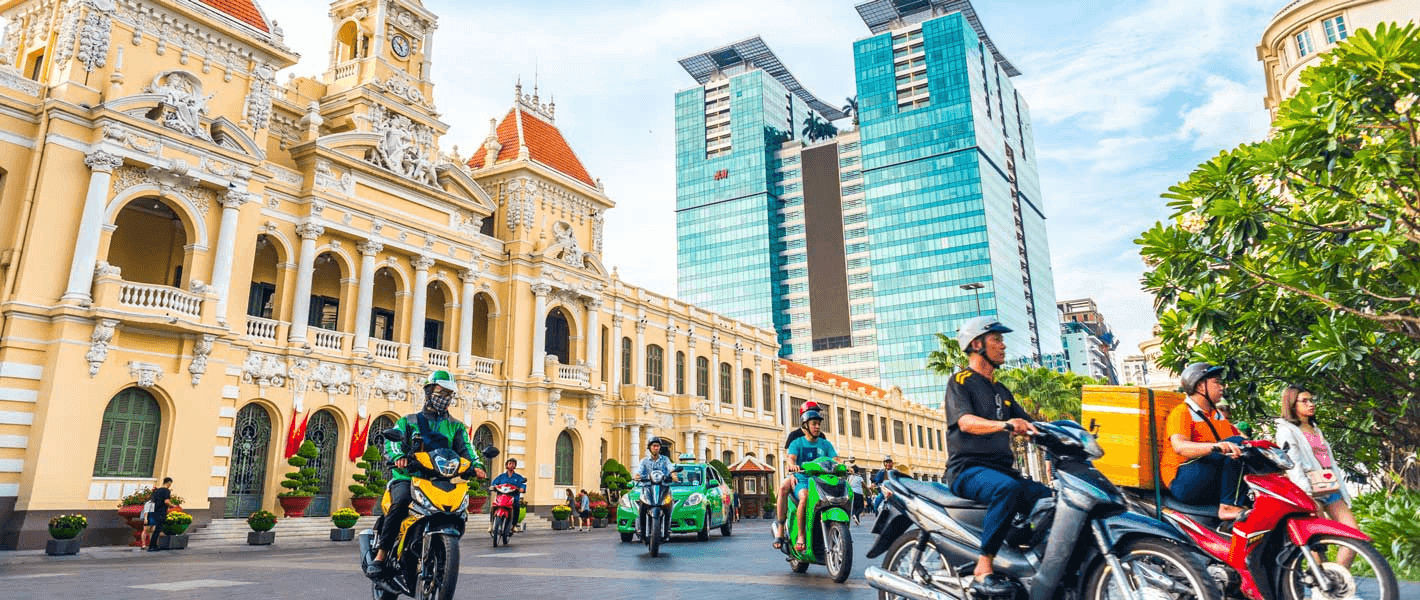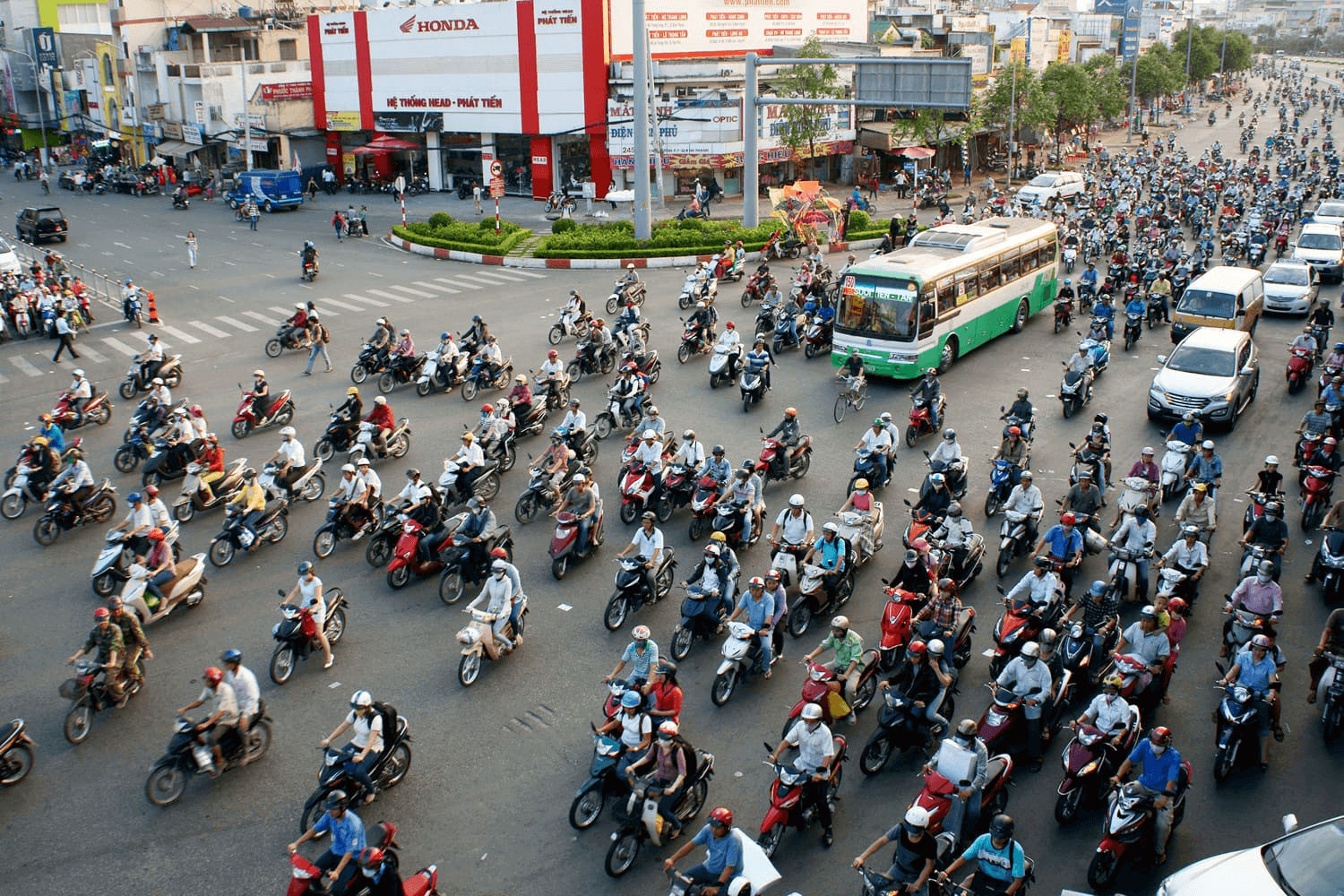Saigon, now officially known as Ho Chi Minh City, is a vibrant and bustling metropolis that stands as the heart of Vietnam. Often the first port of call for international travelers, understanding where Saigon is located is key to planning your Vietnamese adventure. This dynamic city, steeped in history and culture, offers a fascinating blend of the old and new, attracting millions of visitors each year. But exactly where is this captivating city situated? Let’s delve into the geographical details of Saigon.
Discovering the Geographical Location of Saigon
Saigon is strategically positioned in the southeastern region of Vietnam. Nestled on the western bank of the Saigon River, the city benefits from a vital waterway that has shaped its history and continues to influence its commerce. Its location is approximately 60 kilometers (roughly 37 miles) inland from the South China Sea, placing it conveniently between the fertile lands of Southeast Vietnam and the expansive Mekong Delta region. This unique positioning makes Saigon a crucial link between these diverse geographical areas and contributes to its economic significance.
Ho Chi Minh City’s location is further defined by its bordering provinces. To the north, it shares a boundary with Binh Duong province, while Tay Ninh province lies to the northwest. Dong Nai province is situated to the east and northeast, and Ba Ria – Vung Tau province is found to the southeast, offering coastal access. Finally, Long An and Tien Giang provinces border Saigon to the southwest, connecting it to the rich agricultural heartland of the Mekong Delta. This central location within Southeast Vietnam firmly establishes Ho Chi Minh City as a major transportation hub, facilitating connections between numerous surrounding provinces and serving as a pivotal international gateway for the country.
 Map of Vietnam highlighting Ho Chi Minh City
Map of Vietnam highlighting Ho Chi Minh City
Saigon or Ho Chi Minh City? Understanding the Dual Name
The question of “Where Is Saigon?” often leads to another: “Is Saigon the same as Ho Chi Minh City?” The answer is a resounding yes. While officially named Ho Chi Minh City since 1976, the city is still widely referred to as Saigon, particularly in everyday conversation and within the southern regions of Vietnam. This dual naming convention stems from a significant historical shift.
Following the end of the Vietnam War in 1975 and the reunification of the country under the communist North, Saigon, formerly the capital of South Vietnam, was renamed Ho Chi Minh City in 1976. This renaming was a tribute to Ho Chi Minh, the revered prime minister and revolutionary leader who played a pivotal role in Vietnam’s struggle for independence. Despite the official name change, the older name, Saigon, persists in popular usage. Its brevity and historical familiarity make it a common choice in informal settings. However, official documents and increasingly, the younger generation, tend to use Ho Chi Minh City. Understanding this historical context clarifies why both names are used interchangeably and why Saigon remains deeply embedded in the city’s identity.
 Waterfront view of Ho Chi Minh City skyline
Waterfront view of Ho Chi Minh City skyline
Experiencing Saigon: What Awaits You
Beyond its geographical coordinates, understanding “where is Saigon” also means grasping what this city offers. Saigon is a city of contrasts and vibrant experiences. Its urban landscape is a captivating tapestry woven from architectural styles spanning eras. Grand French colonial buildings and wide boulevards stand as elegant reminders of Vietnam’s French colonial past, while modern, sleek skyscrapers reflect its rapid development and economic growth in the present day. This juxtaposition of historical and contemporary elements creates a unique and visually stimulating urban environment.
Saigon pulsates as a major metropolitan center, the economic powerhouse of Vietnam, and a cultural melting pot. Luxury shopping malls and sophisticated restaurants thrive alongside ancient temples and bustling street food stalls, embodying a fascinating blend of tradition and modernity. This dynamic atmosphere makes Saigon an exciting destination for travelers of all kinds, regardless of budget. Whether you are seeking high-end experiences or authentic local encounters, Saigon has something to offer.
Furthermore, Saigon is a culinary paradise, widely recognized for boasting some of the best food in Vietnam. From savoring exquisite fine dining experiences to indulging in the incredibly diverse and flavorful street food scene, Saigon caters to every palate. The city is also gaining recognition for its burgeoning craft brewery scene and its deeply ingrained coffee culture, providing ample opportunities to explore and appreciate Vietnam’s unique beverage traditions.
Administratively, Ho Chi Minh City is organized into 19 urban districts and 5 rural districts. The central urban districts are numerically designated from 1 to 12, while additional urban districts, such as Binh Thanh, Phu Nhuan, and Thu Duc, each possess their distinct character and contribute to the city’s overall diversity. While some districts are more frequented by tourists due to specific attractions, each area offers a glimpse into the multifaceted nature of Saigon life.
 A street scene with motorbikes in Ho Chi Minh City
A street scene with motorbikes in Ho Chi Minh City
Planning Your Trip to Saigon: Best Time to Visit and Essential Facts
Knowing “where is Saigon” in terms of climate is also crucial for trip planning. Vietnam experiences a tropical monsoon climate, which dictates distinct wet and dry seasons. For the most pleasant weather in Saigon, the dry season, spanning from December to April or May, is generally considered the best time to visit. During these months, you can expect sunny skies and lower humidity, ideal for exploring the city. While the wet season (May to November) brings tropical rains, these often come in the form of short afternoon downpours and shouldn’t necessarily deter travel. The average temperature in Saigon remains consistently warm, ranging from 26°C to 29°C (approximately 79°F to 84°F), although it can climb to 40°C (104°F) during the hottest months of March to May.
To further assist in your Saigon adventure planning, here are some quick facts:
- Religion: Vietnamese folk religion and non-religious practices are prevalent, followed by Buddhism, Christianity, and other religions like Caodaism and Hoahaoism.
- Coffee Culture: Saigon boasts a rich coffee heritage. Explore numerous cafes to experience authentic Vietnamese coffee.
- Safety for Solo Female Travelers: Saigon is generally safe for solo female travelers. Exercise common sense and caution, particularly in less crowded areas at night.
- Driving: Navigating Saigon’s traffic can be chaotic. Consider using ride-hailing apps or taxis instead of driving yourself unless you are a very experienced motorbike rider.
- Visa: Visa requirements vary depending on nationality. Many nationalities can enter Vietnam visa-free for a certain period or are eligible for e-visas. Check the latest visa regulations before your trip.
- Pedestrian Experience: Be prepared for motorbikes on sidewalks and a unique approach to crossing roads as traffic may not always stop for pedestrians.
- Language: Vietnamese is the official language. English is spoken in tourist areas, but learning a few basic Vietnamese phrases can enhance your experience.
- Tipping: Tipping is not mandatory but appreciated for good service. Some establishments may include a service charge.
- Bargaining: Bargaining is common in markets and street stalls. Be prepared to negotiate prices respectfully.
- Time Zone: GMT+7.
- Voltage: 220V.
- Electric Socket: Types A, C, and F.
 Traffic congestion in Ho Chi Minh City
Traffic congestion in Ho Chi Minh City
Conclusion: Saigon Awaits Your Exploration
From its strategic location in Southeast Vietnam to its captivating blend of history, culture, and modernity, Saigon, or Ho Chi Minh City, is a destination that promises an unforgettable experience. Whether you are drawn to its historical landmarks, its vibrant street life, its culinary delights, or simply the energy of a rapidly developing metropolis, Saigon has something to captivate every traveler. Consider exploring this dynamic city with a private tour in Ho Chi Minh to fully immerse yourself in Vietnamese culture and discover the hidden gems of this incredible location. If you have any further questions as you plan your Vietnamese adventure, don’t hesitate to reach out to our team for assistance.


